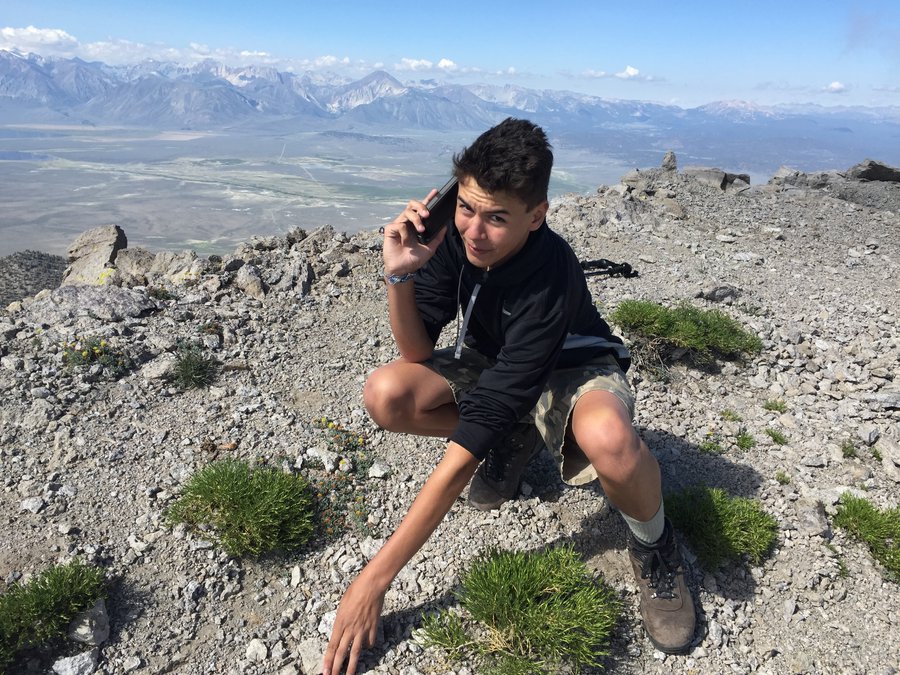Take Highway 120 from downtown Manteca some 160 miles east and you will be near the edge of one of 18 volcanoes in the United States that the U.S. Geological Society has designated as posing a “very high threat.”
The Long Valley Caldera – essentially a massive depression left after the eruption or evacuation of a magma chamber — is one of the largest on earth. It is 20 miles long, 11 miles wide and up to 3,000 feet. It’s located east of Mammoth Mountain and June Lake and south of Mono Lake where Highway 120 passes by its southern shore.
The “very high threat” does not mean the volcanoes on the list pose an immediate risk of erupting. Instead the list — updated for the first time since 2005 — identified volcanoes based on recent activity typically measured in hundreds or thousands of years, the frequency of past eruptions, and seismic activity that justify closer study.
Geological Survey experts cautioned that the threat rankings aren’t about what will blow next, but the potential severity of the damage. The score is based on the type of volcano, how explosive it can be, how recently it has been active, how frequently it erupts, if there has been seismic activity, how many people live nearby, if evacuations have happened in the past and if eruptions disrupt air traffic.
The Long Valley Caldera was formed 760,000 years ago. The most significant activity was a strong swarm of earthquakes in May 1980 that involved four quakes at or slightly above 6.0 on the Richter Scale that hit in the southern region of the caldera that created a 10-inch, dome-shaped uplift on the caldera floor.
Long Valley is rated as the 18th at the bottom of the U.S. Geological Survey’s volcanoes deemed “very high threat.”
Just to the north of the Long Valley Caldera is the Mono-Inyo Craters that Highway 120 passes through on its way east from Highway 395 to its terminus in Benton at U.S. Highway 6. The southern part of that chain had an explosive eruption 600 years ago. The latest on the northern part of the chain — an eruption on Paoha Island in Mono Lake — occurred 300 years ago. Mono Craters due to the type of volcanic activity is not considered a major threat.
The highest California on the “very high threat” is Mt. Shasta at No. 5. The only other volcano to make the list is Mt. Lassen volcanic center at No. 11. The two volcanoes — especially Mt. Shasta — are what comes to most people’s minds when they think of a typical volcano in terms of its mountain peak-like formation and how it erupts. Shasta last erupted in 1786 while Lassen last erupted in 1917. There are five active volcanoes in California.
Lassen was the last volcanic eruption in the continental United States until Mt. St. Helens in the State of Washington erupted in 1980. That eruption killed 57 people, partially collapsed the volcano, caused $1.1 billion in property damages and spread ash across 11 states.
Hawaii’s Kilauea, which has been erupting this year, topped the list released Thursday. The others in the top five besides Mt. Shasta are Mount St. Helens and Mount Rainier in Washington, and Alaska’s Redoubt Volcano. Eleven of the 18 very high threat volcanoes are in Oregon, Washington and California.
The other volcanoes on the list besides the top five, Long Valley, and Lassen are Mt. Hood, Three Sisters and Crater Lake in Oregon; Akutan Island, Makushin, Mt. Spurr and Augustine in Alaska; Mt. Baker and Glacier Peak in Washington; and Mauna Loa in Hawaii.
To contact Dennis Wyatt, email dwyatt@mantecabulletin.com





